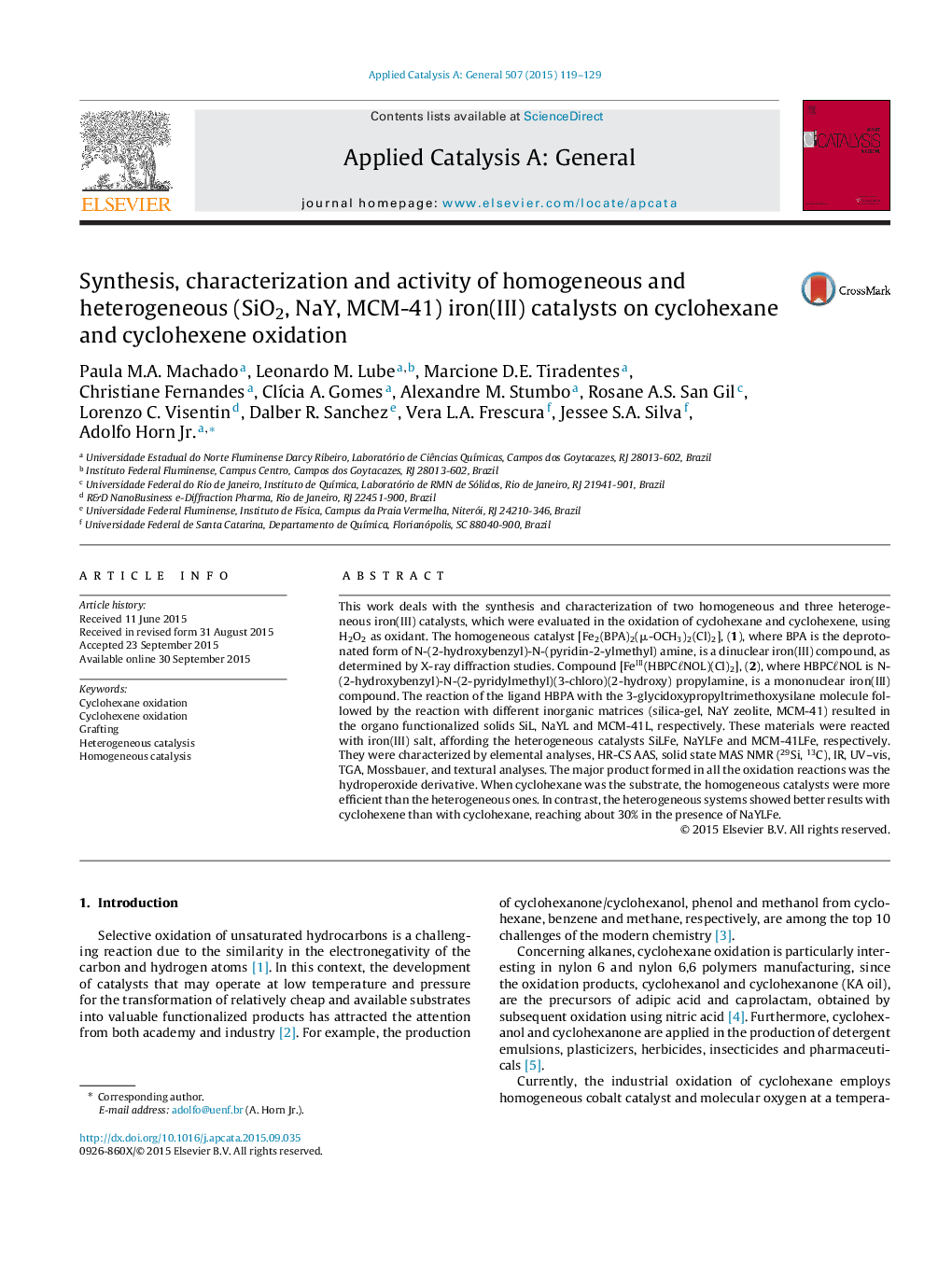| کد مقاله | کد نشریه | سال انتشار | مقاله انگلیسی | نسخه تمام متن |
|---|---|---|---|---|
| 39173 | 45810 | 2015 | 11 صفحه PDF | دانلود رایگان |

• Two homogenous and three heterogeneous catalysts were synthesized and characterized.
• Five iron(III) catalysts were evaluated in the cyclohexane/cyclohexene oxidation.
• The homogenous catalysts showed better performance on cyclohexane oxidation.
• The heterogeneous catalysts showed better performance on cyclohexane oxidation.
• The catalysts showed higher selectivity to cyclohexylhydroperoxide formation.
This work deals with the synthesis and characterization of two homogeneous and three heterogeneous iron(III) catalysts, which were evaluated in the oxidation of cyclohexane and cyclohexene, using H2O2 as oxidant. The homogeneous catalyst [Fe2(BPA)2(μ-OCH3)2(Cl)2], (1), where BPA is the deprotonated form of N-(2-hydroxybenzyl)-N-(pyridin-2-ylmethyl) amine, is a dinuclear iron(III) compound, as determined by X-ray diffraction studies. Compound [FeIII(HBPCℓNOL)(Cl)2], (2), where HBPCℓNOL is N-(2-hydroxybenzyl)-N-(2-pyridylmethyl)(3-chloro)(2-hydroxy) propylamine, is a mononuclear iron(III) compound. The reaction of the ligand HBPA with the 3-glycidoxypropyltrimethoxysilane molecule followed by the reaction with different inorganic matrices (silica-gel, NaY zeolite, MCM-41) resulted in the organo functionalized solids SiL, NaYL and MCM-41L, respectively. These materials were reacted with iron(III) salt, affording the heterogeneous catalysts SiLFe, NaYLFe and MCM-41LFe, respectively. They were characterized by elemental analyses, HR-CS AAS, solid state MAS NMR (29Si, 13C), IR, UV–vis, TGA, Mossbauer, and textural analyses. The major product formed in all the oxidation reactions was the hydroperoxide derivative. When cyclohexane was the substrate, the homogeneous catalysts were more efficient than the heterogeneous ones. In contrast, the heterogeneous systems showed better results with cyclohexene than with cyclohexane, reaching about 30% in the presence of NaYLFe.
Figure optionsDownload high-quality image (140 K)Download as PowerPoint slide
Journal: Applied Catalysis A: General - Volume 507, 25 October 2015, Pages 119–129